Ever wonder if there’s more to telling time than meets the eye? The classic riddle about counting numbers on a clock has stumped many puzzle enthusiasts over the years. What seems like a straightforward question actually hides several clever twists that challenge our assumptions about this everyday object.
We’ll unravel this deceptively simple brainteaser that’s been shared at dinner tables and in classrooms worldwide. The beauty of this riddle lies in its ability to make us reconsider something we’ve looked at thousands of times. Whether you’re a puzzle lover or just curious about this particular mind-bender, understanding the various interpretations will sharpen your critical thinking skills and maybe even give you a fun fact to share at your next gathering.
The Basic Clock Riddle: Understanding the Question
The classic clock riddle typically asks: “How many numbers are on a clock?” At first peek, this seems incredibly straightforward. Most people immediately answer “12” without hesitation, pointing to the twelve hour markers visible on a standard analog clock face. But, this deceptively simple question contains hidden layers that make it a fascinating brain teaser.
When examining the riddle more carefully, we need to consider what the question is actually asking. Does it refer only to the visible numerals on the clock face? Should we count the minute markers? Are we including digital clocks in our consideration? These questions highlight why this riddle effectively challenges our assumptions about everyday objects.
The ambiguity of the question is intentional, forcing us to think beyond the obvious answer. Clock faces vary widely across different designs – some use Roman numerals, others use standard Arabic numerals, and some luxury timepieces use symbols or have no numbers at all. This variability adds another dimension to the puzzle.
Many people miss that a standard 12-hour analog clock actually represents 60 minutes and 60 seconds, potentially adding many additional “numbers” to the count. The riddle’s effectiveness comes from making us reconsider something we look at daily but rarely analyze critically.
Understanding this riddle requires us to question our initial assumptions and consider multiple interpretations of the question. This mental flexibility is precisely what makes such brain teasers valuable exercises in critical thinking and perspective shifting.
Traditional Answers: 12 Numbers on an Analog Clock
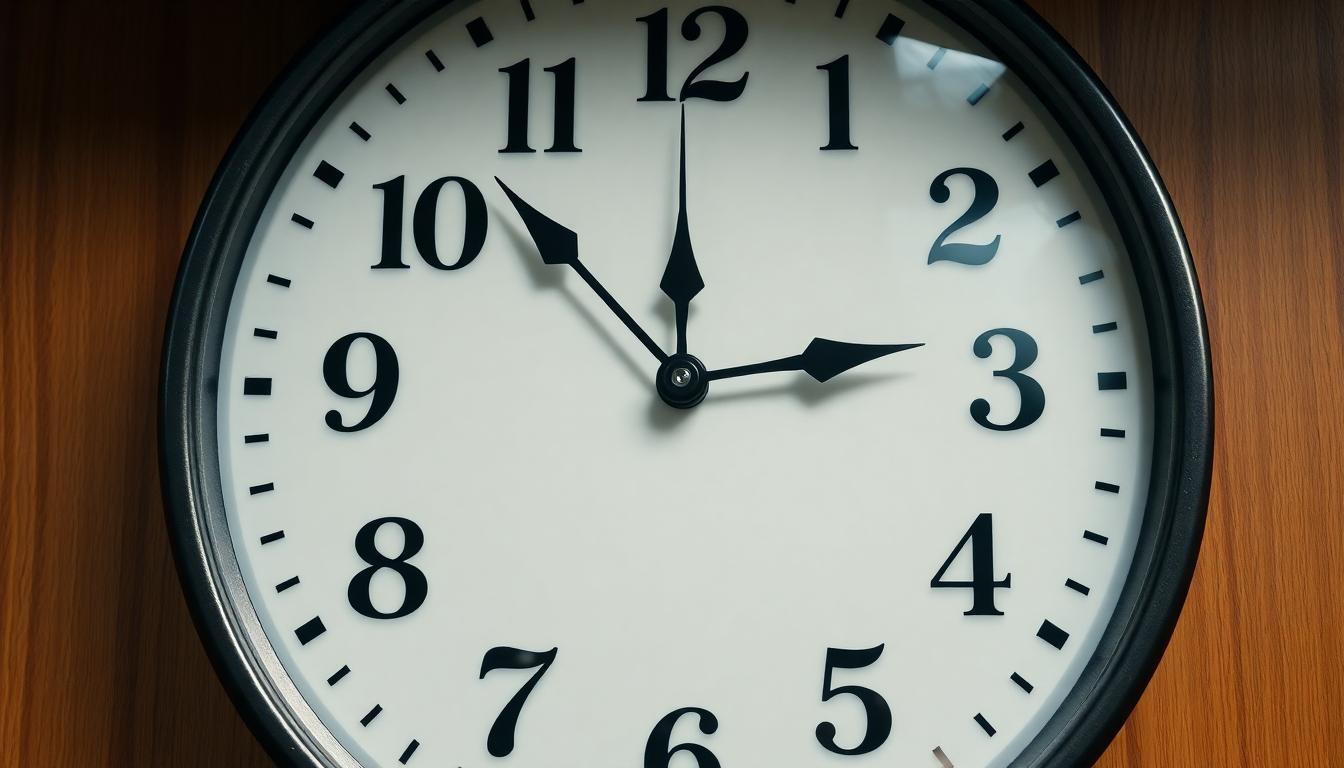
The traditional answer to the clock riddle points to the 12 numerals found on standard analog clocks. This answer stems from centuries of timekeeping tradition and practical design considerations.
How the Standard Clock Face Is Designed
Analog clock faces feature 12 numerals arranged in a circular pattern, representing hours in a systematic layout. These numbers typically appear as Arabic numerals (1-12) or Roman numerals (I-XII) positioned at equal intervals around the perimeter. Each number serves a dual purpose, marking both an hour position and a 5-minute interval when functioning as a minute reference point. The design creates a symmetrical pattern that allows for intuitive reading of time at a peek. Between these main numerals, smaller markers indicate individual minutes, with 60 minutes making up a complete rotation of the minute hand. This elegant arrangement traces back to ancient Babylonian mathematics, which established the foundational principles for our modern timekeeping systems.
Why 12 Is the Most Common Answer
The 12-number system prevails as the standard answer due to its deep historical roots in Babylonian timekeeping practices. These ancient methods influenced subsequent Greek and Roman time systems, effectively cementing the 12-hour format throughout Western civilization. Practically speaking, 12 offers exceptional utility as a base number because it divides evenly into halves, thirds, quarters, and sixths, making it ideal for expressing common time intervals like half-hours and quarter-hours. This divisibility creates a naturally intuitive system for people to comprehend time passages. Besides, 12 distinct numerals provide sufficient reference points without overcrowding the clock face, striking the perfect balance between precision and visual clarity. The cognitive simplicity of the 12-number system makes it universally accessible, explaining why it remains the standard even though occasional alternative interpretations in riddle discussions.
Looking Deeper: 60 Minute Markers as Another Solution
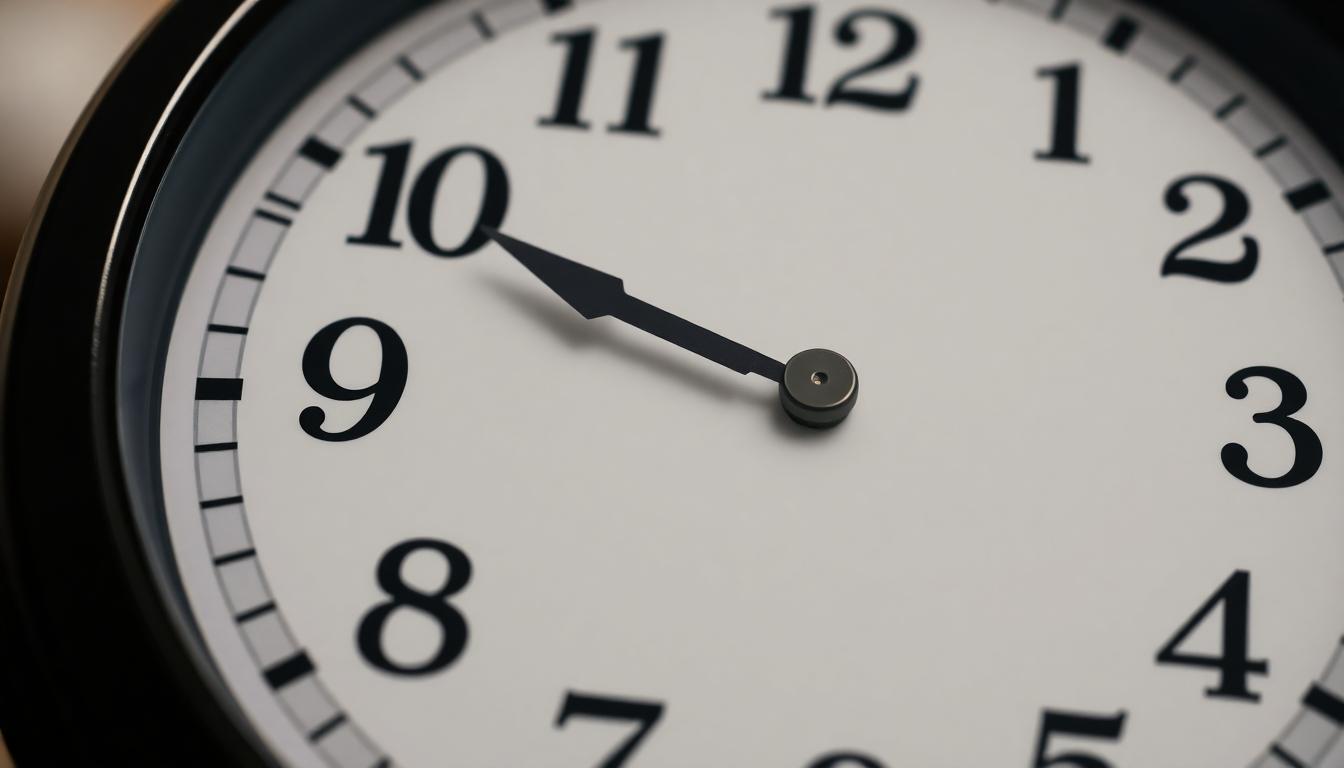
While the 12-number answer is conventional, there’s a compelling alternative interpretation that challenges our understanding of the clock riddle. This perspective counts 60 distinct markers rather than just 12 numerals.
The Minute Hand Perspective
The minute hand perspective shifts our focus beyond the obvious hour numbers to include all possible positions a clock’s hands can point to. Each hour mark on a standard analog clock has five minute spaces between it and the next hour, creating a total of 60 markers around the entire clock face. These markers represent exact temporal measurements that the minute hand tracks as it makes its hourly circuit. Every minute position, though not always labeled with numbers, functions as a numerical reference point that the minute hand specifically indicates. This expanded view acknowledges that a clock’s face isn’t just designed to show hours but also precisely displays minutes through these additional markers.
Why Some Consider This the Correct Answer
Many puzzle enthusiasts consider the 60-marker interpretation the most accurate solution because it encompasses a more comprehensive understanding of a clock’s function. This approach values all potential stopping points for the clock’s hands, not just the prominently displayed hour numbers. The minute markers, though visually smaller than hour numerals, are equally important timekeeper elements that represent exact numerical values in our time measurement system. Each marker corresponds to a precise minute count (1 through 60), making them legitimate “numbers” in functional terms. Taking this broader interpretation demonstrates deeper insight into the clock’s design purpose and acknowledges that time measurement extends beyond just hourly increments.
Hidden Solutions: 24 Hours in a Day
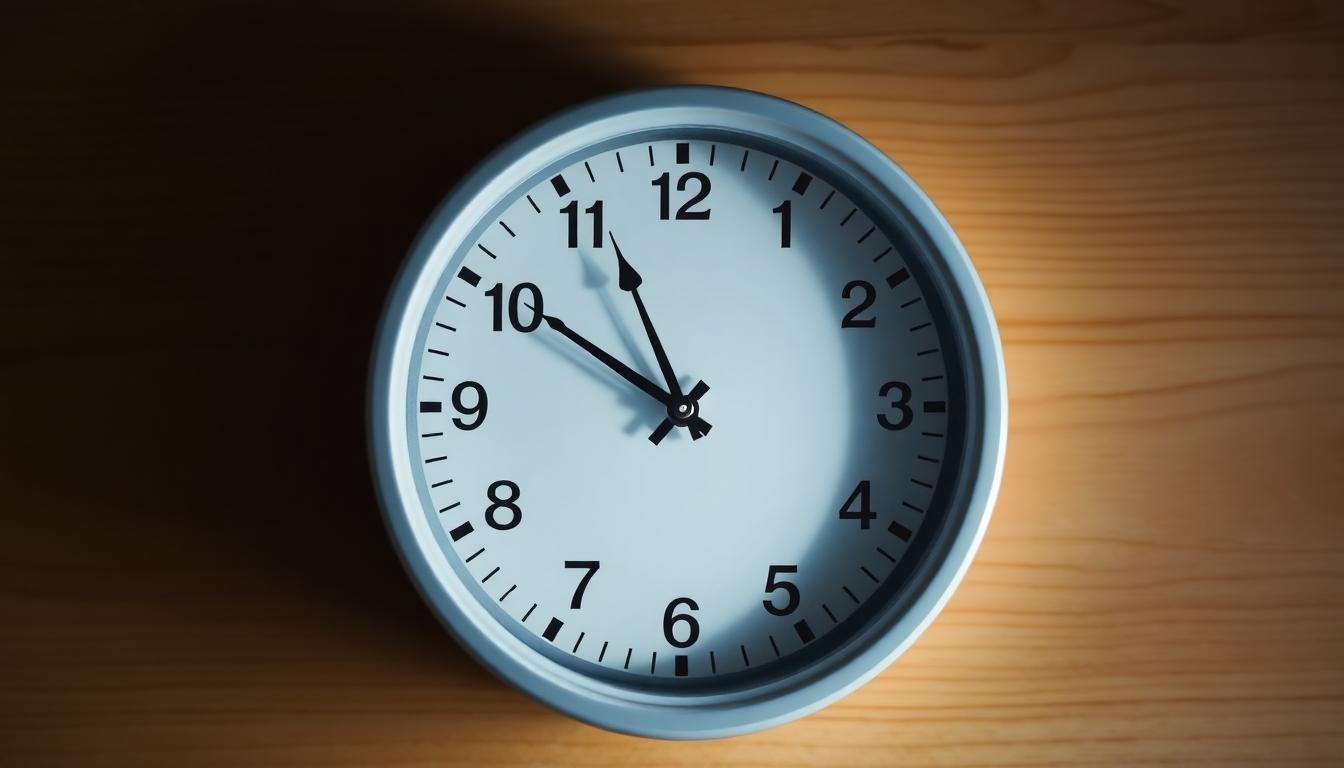
Military Time and 24-Hour Clocks
When examining the clock numbers riddle through a different lens, we must consider the 24-hour format commonly used in military settings, transportation, and many countries worldwide. Unlike standard 12-hour clocks, 24-hour analog clocks complete just one full rotation per day rather than two. These specialized timepieces display all 24 hours on their faces, creating a distinct visual representation of time that eliminates the AM/PM distinction. Though relatively uncommon in everyday settings, 24-hour analog clocks provide an unambiguous way to tell time without needing additional context about whether it’s morning or evening.
How This Changes the Riddle’s Answer
The introduction of 24-hour timekeeping fundamentally transforms our answer to the original riddle. Instead of the traditional 12 numbers, a 24-hour analog clock would theoretically display 24 distinct numerals on its face. This alternative interpretation creates an entirely different solution that’s technically correct when discussing this exact clock type. Digital 24-hour clocks add further complexity, as they use digits (0-9) rather than discrete numerals, displaying six positions (HH:MM:SS) that change throughout the day. Military time aficionados might argue that these digit changes represent a different category of “numbers” altogether. Even though these interesting variations, puzzle experts generally agree that the riddle’s conventional answer remains 12, as it specifically targets the standard analog clock format most commonly encountered in everyday life.
Digital Clock Variations: Even More Numbers
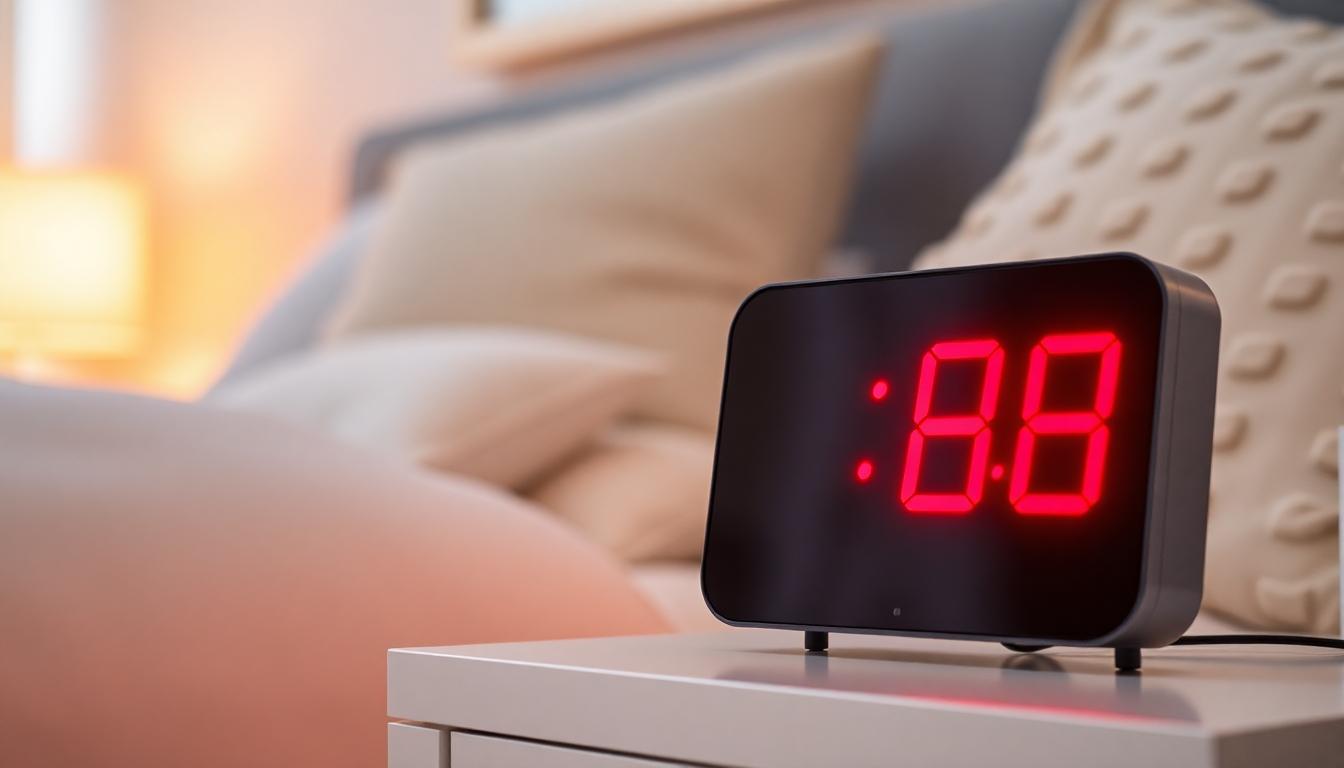
When exploring the clock riddle, we must consider digital timepieces, which present an entirely different numerical industry compared to their analog counterparts. Digital clocks introduce additional complexity to the “how many numbers” question by displaying time through numerical digits rather than physical hands pointing to numbers.
Numbers Displayed on Digital Clocks
Digital clocks typically present time using the HH:MM format, showing four distinct digits at any given moment. Unlike analog clocks that display 12 fixed numbers, digital timepieces can show any combination of numbers from 0 to 9 throughout the day. These devices cycle through many numerical combinations as time progresses, displaying values like 12:34, 07:59, or 00:01. The total range of potential digits exceeds what’s visible on traditional analog faces, making the answer to our riddle significantly different when applied to digital timepieces. Each moment captured on a digital clock represents a unique numerical snapshot, with the possibility of showing multiple instances of the same digit simultaneously.
LCD and LED Display Considerations
Digital clocks commonly use LCD (Liquid Crystal Display) or LED (Light Emitting Diode) technology to present numbers with remarkable clarity. These display technologies have revolutionized timekeeping by allowing greater versatility in how numbers appear across various devices—from wristwatches to wall clocks and alarm systems. LED displays often feature bright, vibrant numbers that remain visible even in darkness, while LCD screens offer energy efficiency and greater detail. Though the display type doesn’t alter the quantity of unique digits shown at any moment, it significantly impacts the visual presentation and readability of these numbers. Both technologies support the full range of numerical combinations needed for accurate digital timekeeping, improving our experience with these modern clock variations.
Mathematical Approaches: Infinite Numbers on a Clock
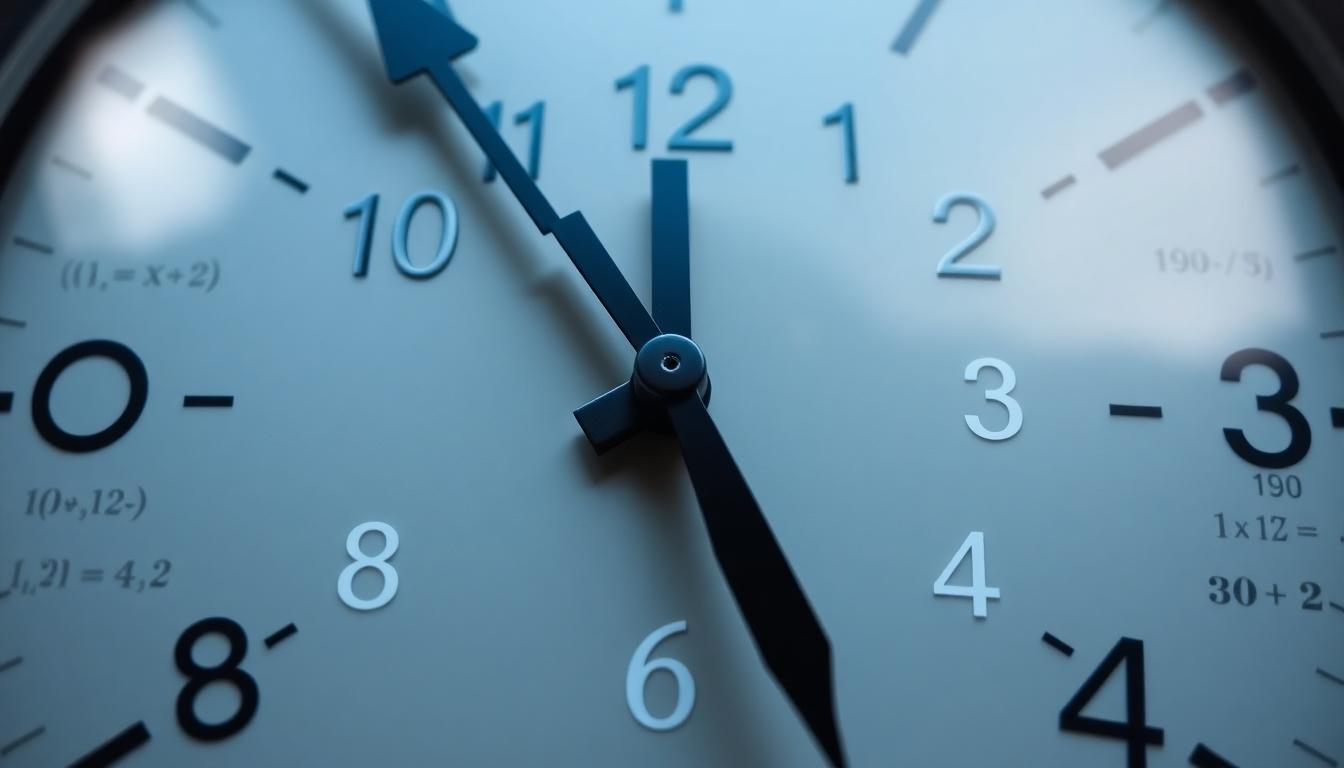
When we examine clocks through a mathematical lens, the simple question of counting numbers transforms into a fascinating exploration of infinity and continuity. Mathematical perspectives challenge our conventional understanding of how many numbers truly exist on a clock face.
The Continuum Between Markings
From a purely mathematical standpoint, we can argue that there are infinitely many numbers on a clock when considering the continuum between each marked hour. Between any two consecutive hour markings (such as 1 and 2), there exists an unlimited number of time points representing every possible fraction of an hour. These points form a continuous spectrum of time values that extends beyond the visible markings on the clock face. The minute hand sweeps through this continuum, traversing an infinite set of positions as it moves between any two visible numbers. This mathematical reality suggests that clocks represent far more than the discrete numbers we typically count, encompassing a theoretical infinity of time points that exist in the spaces between markings.
Theoretical Mathematics in Clock Design
Mathematical concepts have inspired unique clock designs that expand our understanding of how numbers can be represented on timepieces. Some innovative clocks incorporate unconventional numerical systems, such as binary representations or mathematical constants. For instance, certain mathematical clocks use Euler’s number (e) to represent exact hours, creating a timepiece that merges functional timekeeping with mathematical elegance. These creative interpretations don’t change the conventional count of twelve numbers on a standard clock face, but they do showcase how mathematical principles can transform clock design. Advanced mathematical clocks might represent time using different number bases or through geometric patterns, demonstrating that time representation isn’t limited to our familiar decimal system. These theoretical approaches invite us to reconsider what constitutes a “number” on a clock, adding yet another layer to this seemingly simple riddle.
Trick Answers and Wordplay in the Clock Riddle
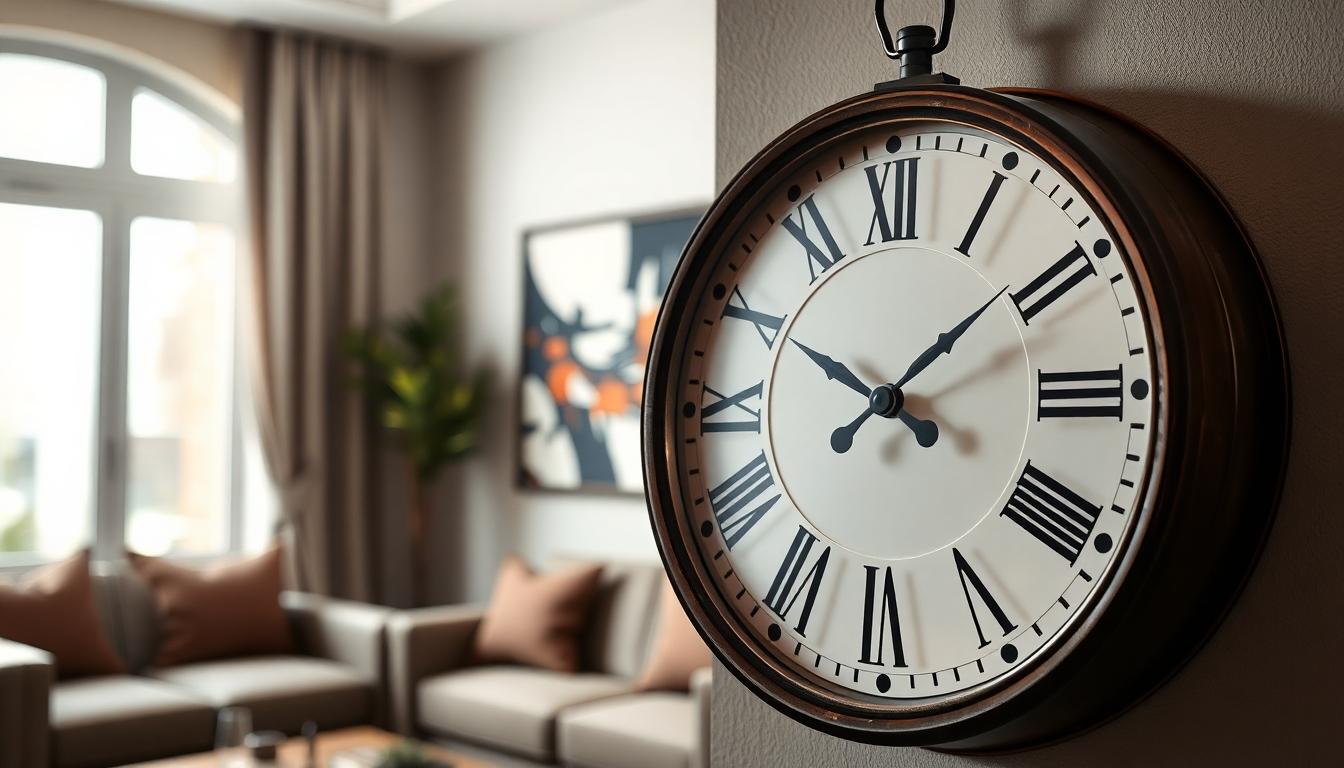
The clock riddle’s apparent simplicity masks a playground of linguistic ambiguity and clever wordplay. While the literal answer is straightforward, several interpretations create opportunities for trick answers that challenge conventional thinking.
Roman Numerals and Alternative Notations
Clocks featuring Roman numerals present an interesting variation to the standard clock riddle. Even though using different symbols (I, II, III, IV, etc.), these timepieces still display exactly 12 numerals around their faces. The visual complexity of Roman numerals can sometimes lead to confusion, particularly with characters like IV (4) or IX (9), which might be mistakenly counted as separate symbols. Some people incorrectly tally more than 12 when they count I and V as two distinct numbers in IV, but the correct count remains 12 regardless of notation style. This misconception highlights how the riddle exploits our perception of symbols rather than the underlying quantity they represent.
Count the Letters Instead of Digits
Another clever wordplay approach involves counting the letters in each numeral word rather than the digits themselves. This interpretation asks us to consider “one” (3 letters), “two” (3 letters), “three” (5 letters), and so on through “twelve” (6 letters). Some puzzle enthusiasts suggest adding all these letters together for a grand total, creating an unexpected answer far beyond the conventional 12. This interpretation, while creative, lacks widespread support in authoritative explanations of the riddle. The key to this wordplay lies in the semantic precision between terms like “numbers” versus “numerals,” though most standard answers focus on the traditional 12-hour cycle displayed on analog clocks. Such linguistic tricks remind us how riddles often operate at the intersection of language and logic, challenging our assumptions about seemingly straightforward questions.
Solving the Riddle: Multiple Correct Answers
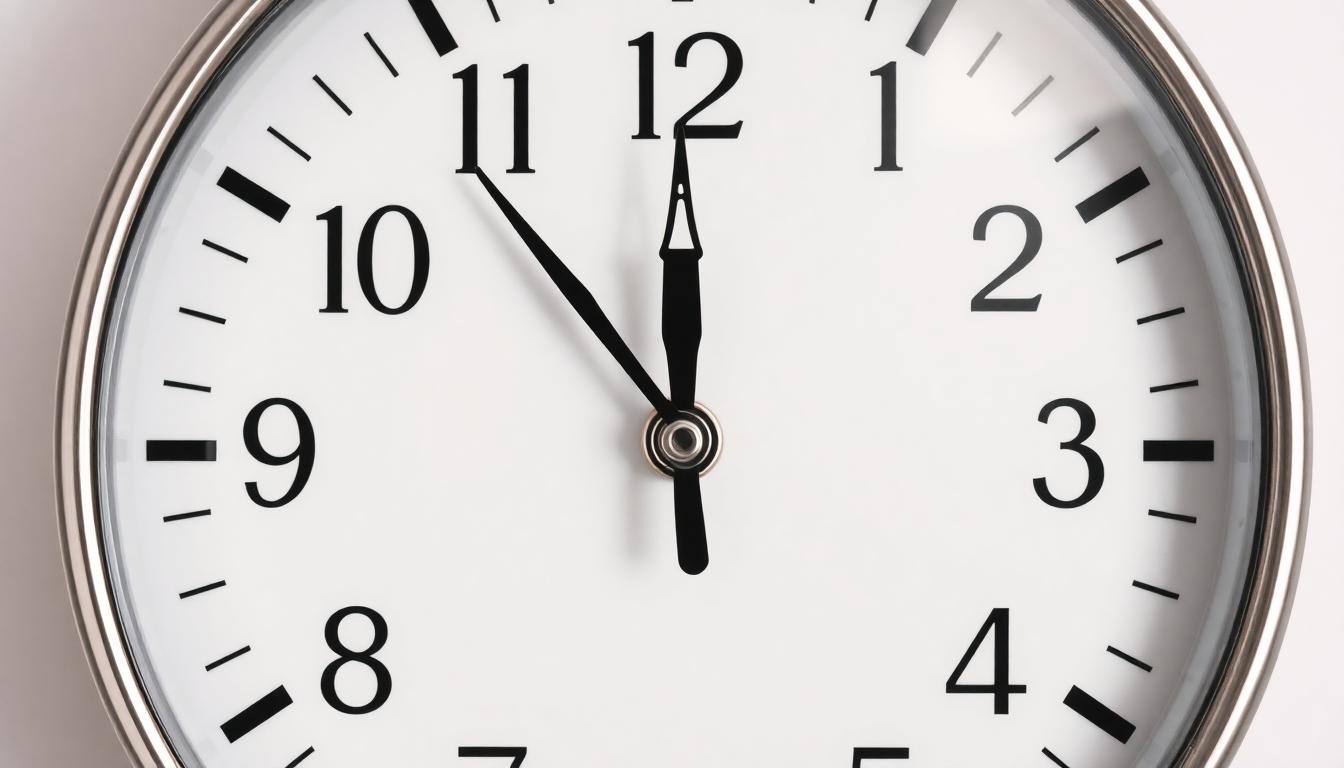
The clock number riddle’s beauty lies in its multiple valid interpretations, each offering a different but correct answer depending on how you define “numbers.” Let’s explore these different approaches that make this riddle so captivating.
The Standard Answer: 12 Numbers
Most people immediately answer “12” when asked how many numbers are on a clock, and they’re absolutely right in the conventional sense. Traditional analog clocks display the numerals 1 through 12 around their faces to mark the hours. This widely accepted answer distinguishes between numbers like “12” and individual digits such as “1” and “2.” Clock designs have maintained this 12-number format for centuries, making it the standard response in most contexts.
The Digit-Counting Approach: 15-18 Numbers
Some puzzle enthusiasts take a more detailed approach by counting each individual digit rather than each numeral. Using this method:
- Numbers 1-9 contribute one digit each (9 digits total)
- Number 10 contributes two digits (1 and 0)
- Number 11 contributes two digits (1 and 1)
- Number 12 contributes two digits (1 and 2)
This calculation results in 15 total digits on a standard clock face. Occasionally, this count is misinterpreted to reach 18 digits through repeated counting of certain elements, though the accurate digit count remains 15.
The Numerical Symbols Perspective: 10 Distinct Digits
Another fascinating interpretation considers only the unique digits used on a clock. By this logic, clocks use just the digits 0 through 9, with some appearing in combinations to form 10, 11, and 12. This interpretation yields an answer of 10 distinct numerical symbols, though it contradicts the conventional arrangement of most analog clocks.
Each of these answers can be considered correct based on the exact interpretation of “numbers” in the riddle’s context. When confronted with this puzzle, we recommend clarifying whether the question refers to hour markers (12), individual digits (15), or unique numerical symbols (10). This versatility in possible answers makes the clock number riddle a particularly effective tool for demonstrating how precise language and careful interpretation affect problem-solving.
Teaching Logic: Why Clock Riddles Are Valuable Brain Teasers
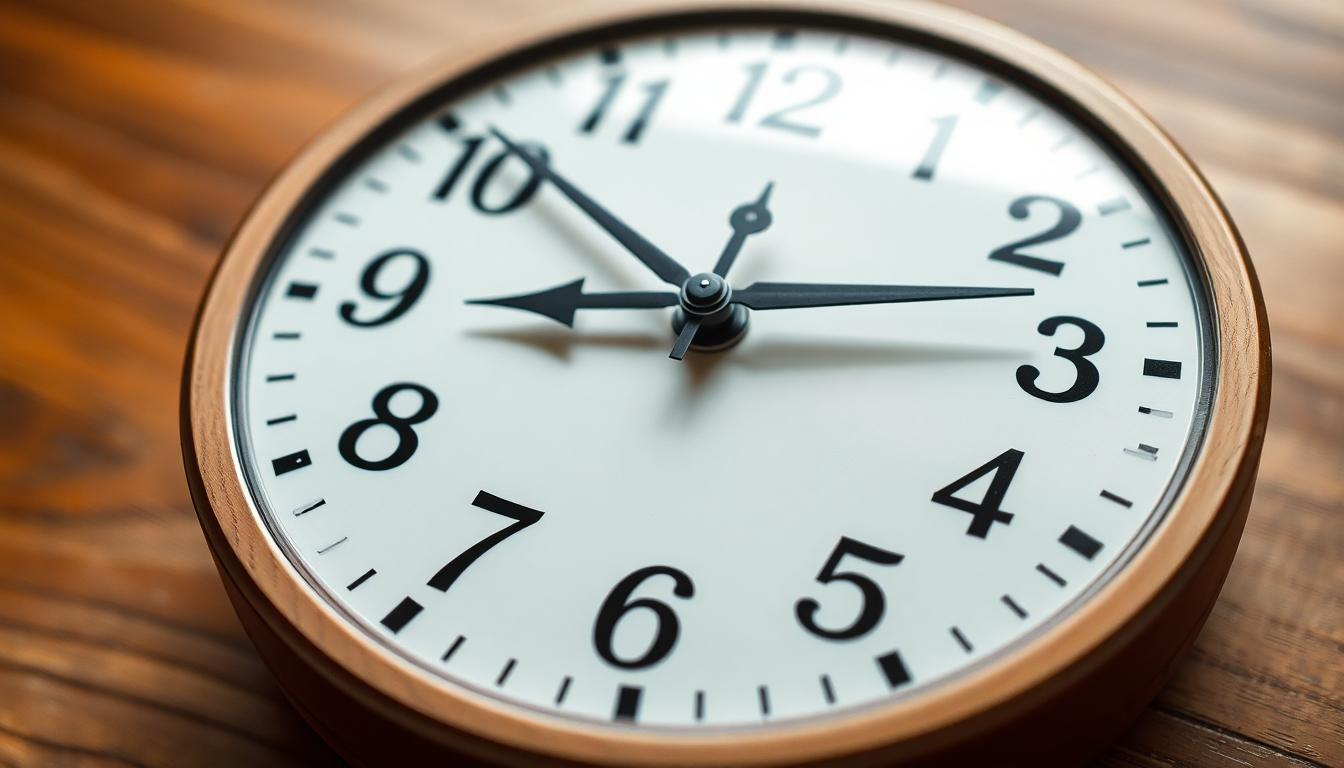
Clock riddles serve as excellent tools for developing critical thinking skills in learners of all ages. The seemingly simple question about how many numbers appear on a clock face actually provides rich educational value across multiple cognitive domains. Here’s why educators and puzzle enthusiasts appreciate these timepiece teasers:
Developing Semantic Precision
Clock number riddles teach important distinctions between related mathematical concepts. Students learn to differentiate between numbers (complete numerals like “12”) and digits (individual symbols like “1” and “2”). This semantic precision helps learners communicate mathematical ideas with greater accuracy. For example, counting all individual symbols from 1 to 12 yields 15 digits rather than 12 numbers, introducing an important conceptual distinction that enhances mathematical literacy.
Challenging Assumptions
These riddles excel at prompting us to question our initial assumptions. When faced with the clock number question, most people immediately answer “12” without analyzing what the question truly asks. The puzzle forces learners to examine whether the question refers to numerals displayed on the face or the component digits that make up those numerals. This process of questioning assumptions forms the foundation of scientific inquiry and logical reasoning.
Strengthening Critical Analysis
Working through clock riddles strengthens analytical skills by requiring systematic evaluation of multiple interpretations. Learners must break down the question’s wording, consider various definitions of “numbers,” and evaluate competing answers based on evidence. This analytical approach combats cognitive shortcuts and teaches students to prioritize rigorous reasoning over quick assumptions.
Connecting to Historical Mathematics
Clock riddles provide a fascinating window into ancient numerical systems. The 12-number system on traditional clocks originates from Babylonian base-60 mathematics, connecting modern students to historical numeracy practices. When exploring clock riddles, we’re captivating with mathematical traditions that have shaped human timekeeping for millennia, adding cultural context to what might otherwise seem like a simple counting exercise.
Promoting Exact Communication
Perhaps most importantly, clock riddles demonstrate the crucial role of precise language in problem-solving. Instructors use these puzzles to show how slight variations in wording can fundamentally change a problem’s solution. By analyzing how different interpretations lead to different answers (12 numerals versus 15 digits), students develop communication skills essential for mathematics, science, and logical reasoning.
Building Systematic Reasoning Skills
Working through the clock number riddle teaches a methodical approach to problem-solving. Rather than jumping to conclusions, students learn to create a framework for analysis, consider multiple perspectives, and evaluate each possibility systematically. These foundational reasoning skills transfer to more complex problem-solving scenarios across disciplines.
Conclusion: The Beauty of Ambiguous Riddles
The clock number riddle perfectly illustrates the magic of seemingly simple questions that offer multiple valid answers. Whether you count 12 hour markers 60 minute indicators 24 hours in a military clock or even infinite points between markers each perspective reveals something about our assumptions.
What makes this riddle special isn’t finding the “correct” answer but recognizing how different interpretations can all be valid depending on your perspective. It’s a reminder that even familiar objects like clocks can surprise us when we look at them with fresh eyes.
Next time you peek at a clock try seeing beyond the obvious and appreciate the mathematical and philosophical complexity hiding in plain sight. After all the best riddles don’t just test our knowledge – they transform how we see the industry around us.
Frequently Asked Questions
How many numbers are on a standard analog clock?
The standard answer is 12 numbers on an analog clock face, representing the hours. However, this riddle has multiple valid interpretations. Some argue there are 60 numbers when counting minute markers, while others consider only the visible numerals. The answer depends on how you define “numbers” in the context of the clock and what elements you choose to count.
Why do clocks traditionally have 12 numbers?
Clocks have 12 numbers due to ancient Babylonian mathematics and practical design considerations. The number 12 divides evenly into halves, thirds, quarters, and sixths, making it intuitive for timekeeping. This format has persisted for centuries because it provides clarity and cognitive simplicity for users while effectively representing the daily cycle of time.
Could there be 60 numbers on a clock?
Yes, counting 60 is a valid interpretation when considering minute markers. Each hour mark has five minute spaces between it and the next, totaling 60 distinct points around the clock face. Though not always labeled with numerals, these markers serve as numerical reference points for the minute hand, representing each minute position in an hour.
How many numbers are on a 24-hour clock?
A 24-hour analog clock displays all 24 hours on its face, eliminating the AM/PM distinction used in 12-hour clocks. This format is commonly used in military settings and transportation. When asking how many numbers are on such a clock, the answer would be 24 distinct numerals, presenting yet another valid interpretation of the riddle.
Do digital clocks change the answer to the riddle?
Absolutely. Digital clocks display time using numerical digits in HH:MM format, showing four distinct digits at any moment. Unlike analog clocks with fixed numbers, digital displays can show various combinations of digits from 0-9 throughout the day. This fundamentally changes the riddle’s answer, as we would count the actual digits used rather than positions.
Is there a mathematical perspective to this riddle?
From a mathematical perspective, one could argue there are infinitely many numbers on a clock. Between each marked hour or minute, the hands traverse an infinite continuum of positions. Advanced mathematical clocks might use binary representations or mathematical constants, expanding our understanding of how numbers can be represented on timepieces and adding another dimension to this seemingly simple riddle.
How can wordplay affect the answer to the clock riddle?
The riddle’s linguistic ambiguity allows for creative interpretations. For instance, when counting Roman numerals (I, II, III, etc.), we still have 12 numerals but with different symbols. Another approach involves counting the letters in each number word (“one” through “twelve”), yielding a different total. These linguistic tricks highlight the intersection between language precision and logical problem-solving.
What makes this riddle valuable for education?
Clock riddles develop critical thinking across multiple cognitive domains. They teach semantic precision, challenge assumptions, and strengthen analytical skills. By prompting learners to differentiate between numbers and digits, these riddles enhance mathematical literacy and communication skills. They also connect students to historical mathematics, illustrating how numerical systems evolved within cultural contexts.







